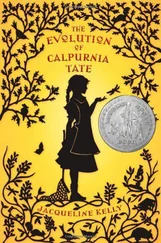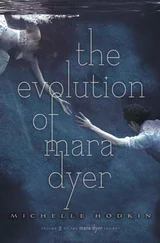I do not know whether Dr. Plumlee suspected us of anything back then. He was already backing away from the project. It had gotten out of his control. Surely he noticed that there was something going on between us. His suspicion may also have been fueled by jealousy. That I can understand. How could he not have been secretly in love with her to some degree? Maybe without even consciously realizing it himself? Anyone could see that Lydia was a woman in love, and anyone could also have seen that whoever was the object of her love, it was not Norman Plumlee. I suspect that this jealousy of his lay close beneath his decision to terminate the project. I honestly don’t know how long Norm had suspected that Lydia and I were having an affair, but eventually — as did everyone — he found out. But I’m getting ahead of myself.
As I have said, Lydia and I were in love, and it made us reckless. We probably could have— should have — been more careful, and obviously in hindsight I realize this, but I don’t know if we ever could have possibly realized it at the time. The blinders were up. We were not thinking of the consequences. Lydia and I were addicted to each other. And as is the case with all addicts, the short-term ecstasy of our love was so overpowering that we always gave in to it, and all censorious long-term logic immediately vanished into mist every night we went to bed together.
Now the wheel of the seasons had made a full revolution, and Chicago found itself sunken once again at the bottom of winter. Hats, boots, scarves, gloves. Icicles, snow, streets all mushy with gray-black sludge, and slicing winds that freeze the snot in your nose before you’ve taken ten steps outside. When I think back on it, I seldom remember Chicago in any season but winter. Some cities are like joyful little children, they live for their summers, and other cities have personalities more like curmudgeonly old men who live for their winters, simply because it means they may wear big coats with lots of pockets to put their things in. Chicago is such a city.
As I mentioned earlier, Lydia had arranged an exhibition of some of my best work in a gallery space in the University of Chicago Main Library. Until the very end, it was a fantastic evening. It was only a week after Norm and Lydia officially went public with me, in a paper that was published in Volume 367, Number 6464 of Nature , which Lydia coauthored with Dr. Norman Plumlee, her immediate supervisor at the lab, even though Plumlee had very little to do with the project anymore — that is, the BRUNO Project (Behavioral Rearing into Ultroneous Noumenal Ontogenesis — a clunky acronym, but whatever; I didn’t come up with it). The paper was written almost entirely by Lydia. Perhaps Dr. Plumlee peppered it with a few anodyne footnotes that the paper frankly could have done without. I suspect there were two principal reasons why Plumlee’s name appeared on that paper — placed unjustly and unalphabetically before and above that of Dr. Lydia Littlemore: (one) because Lydia feared that her research — with the cataclysmic paradigm shift in our understanding of humanity and animality that her conclusions necessarily demanded, and seeing as she was still a very green unknown in her field at the time — would not be taken seriously (there it is again!) by the scientific community unless she could lean on the crutch of prestige that was Dr. Norman Plumlee’s name; and (two) because of Plumlee’s vain and childish desire to attach himself like a leech onto the body of research that was pretty much all Lydia’s, Lydia’s and mine.
Anyway, Volume 367 Number 6464 of Nature , in which appeared the article “The BRUNO Project: One Extraordinary Chimpanzee Provides New Potential for Studies in Complex Linguistic Communication in Great Apes,” by Dr. Norman Plumlee of the University of Chicago and Dr. Lydia Littlemore, also of the University of Chicago, pages 247–255, had gone to press one week before the opening exhibition of my artwork.
Although the paper went into great depth regarding my impressive ability to understand much spoken English, it did not mention my capacity for producing spoken language. This is mostly because I wasn’t really saying anything yet. I spoke, of course — I was an irrepressible chatterbox, I was speaking constantly! — but for some reason, at this point, only Lydia could understand what I was saying. I even began to suspect that the other scientists in the lab had been ever increasingly falling under the persuasion that Lydia’s nearly fluent comprehension of my speech was a bit of specious and irresponsibly unscientific wishful thinking on her part, that she overinterpreted all my breathy, inarticulate puttering, grunting, and squeaking noises as burgeoning speech — which is exactly what they were. The other scientists did not understand my speech because they did not spend even a fraction of the amount of time with me that Lydia did, because they did not know me, because they did not love me.
In any event, the fact that I was — however indiscernibly to outsiders — speaking at probably the language-competence level of about a two-year-old child was the source of a disagreement between Lydia and Dr. Plumlee. Lydia had wanted to include this in the paper, and Norm advised her against it, as he was concerned that such an amazing claim would not be believed and would be difficult if not impossible to prove to naysayers. In the end, Norm, predictably, won, Lydia acquiesced, and I was presented to the public not yet as a talking ape but as a listening one, which for some reason was less impressive.
The gallery opened at 8:00 p.m. Before the guests in attendance entered the gallery space, they watched Norm deliver a presentation in a nearby lecture hall, followed by a twenty-minute film of me performing tasks in the lab. I did not actually see the film, but from what I understand, the people were awfully impressed by my cognitive faculties. In one of the more telling segments of this film, there was footage of me sitting at a table in the lab, sorting photographs at Norm’s request. I remember the experiment. Norm handed me a stack of photographs. There were about twenty glossy five-by-three-inch photos. About half of them were pictures of people — some of whom I knew (Lydia, Norm, Prasad, Tal — this footage was shot before the finger-biting incident), some of whom I did not (random idiots off the street), and half of them were pictures of chimpanzees. One of the pictures was of me. Norm asked me to sort the photographs into two categories. At first I thought maybe he was asking me to sort them into two piles, one for men and one for women. So I assorted them accordingly, putting all the human women in with the female chimps. Norm then took back the photos and scrambled their order again. I received no reward, so I knew I must have been sorting the pictures in a way that did not accord with Norm’s taste. The deck reshuffled, Norm handed me back the stack of photos and asked me again to order them into two categories, like with like. Then I realized that of course he wanted me to divide the pictures into a human pile and a chimp pile. I included my own picture in the human pile. I am sure that at this moment in the film, a collective moan of compassionate heartbreak rose up in the audience.
I was not watching the film because I was with Lydia, getting ready for my first big introduction into society. My cotillion. In a small murky bathroom somewhere in the building, Lydia prepared me for the evening. All afternoon we had been bustling around in the gallery, making sure everything was just so: assuring that all the paintings had been hung properly, that all the lighting was just right, not too dim, not too glaring. Lydia was wearing a beautiful black dress. She had been romping around the gallery in bare feet all afternoon, the bottoms of her feet sticking to and unpeeling from the hard waxy floor, because she had worn pretty but locomotionally impractical high-heeled shoes for the occasion, and was uncomfortable in them — they “killed” her, she said. Planning to put her shoes on only at the last possible minute, she secreted them in her purse and had gone barefoot (like Tal) until now. In the little bathroom where we were preparing for the gallery opening, I stood before the mirror, Lydia standing behind me, her head more than a full two feet above mine in our reflected image, and she brushed the unruly fur on the top of my head. She kept twisting the knob of the sink faucet to dribble warm water over her fingers, then smoothing my fur out with her hand and straightening it with her hairbrush, her movements made savage and jerky by her nervousness. I wore a small gray suit, with my stubby legs sheathed in a pair of pants selected by necessity from the Marshall Field’s boys’ department, and a matching suit jacket selected from the men’s. Lydia tucked, tugged, buttoned, zipped, prodded and pulled my Sunday-bests into place, knotting the verdant lime-green tie that I myself had selected, pulling my socks over my feet and lacing my smart tan shoes.
Читать дальше












